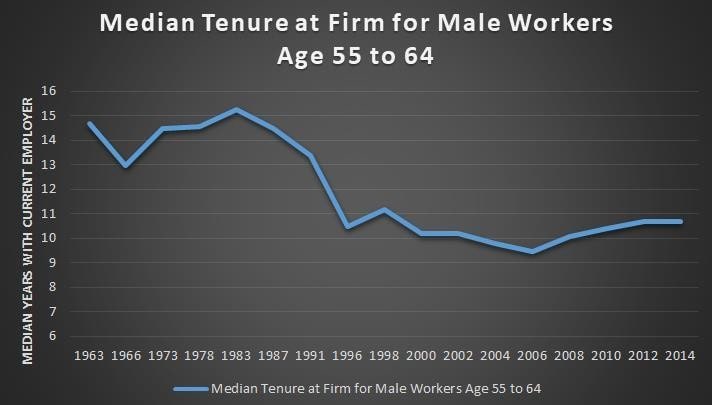The social safety net is not ready for the next tech revolution. Here’s why

With the rise of the gig economy, many people have no regular employer at all.
Image: REUTERS/Shannon Stapleton
Stay up to date:
Social Protection
Will robots, artificial intelligence and the technology revolution mean the end of the American workforce? Recent studies suggest yes – with the most dystopian of views foreshadowing the disappearance of the middle class, replaced by machines, forcing the government to provide basic services and funding for generations of a new underclass.
The reality is that no one can predict the future, and if history is any indicator, creative disruption often brings a new series of innovations that create economic growth and ultimately jobs. In the last half of the 21st century, computers replaced many of the tasks performed by human hand, but at the same time, new jobs were created in the computer industry. Indeed, employment as a computer specialist grew 95 times as a proportion of total employment between 1960 and 2000, from 12,000 to 2.5 million jobs.
Still, those concerned about the displacement of the American workforce are correct in one sense – that any mass-scale workforce disruption will overload our existing social safety net. How do we know? Because our safety net and its connected government programmes have failed to keep pace with the changes we have already experienced.
Much of America’s current system was built during the 1960s, an era where most Americans went to college straight out of high school, worked at one company which provided health care and pension benefits, and then retired to enjoy the remaining few years of their lives. That is simply not the world in which we are operating today.
Older students
First, in 1970, 72% of college students were 25 or younger. Only 15% were 30 or older. Today, those numbers are 59% and 25% respectively. Many college students today commute to class from their own home rather than a dorm. They juggle school with work and family, so they can get the skills they need for their next job.
As technology disrupts an increasing number of jobs at a faster pace, more and more of us are going to find ourselves going back to school to learn new skills in our thirties, forties, and beyond. Life-long learning will become the norm.

Yet our education system is largely designed around ensuring that people under the age of 25 spend the requisite number of hours in a chair in a classroom, whether they learn anything or not. This must change. The future requires a system of credentialing, competency-based learning, and flexibility that helps individuals learn new skills over the course of their whole life.
Shorter tenure
Second, in the 1970s, a male worker age 55 to 64 had been with his employer an average of approximately 14.5 years. Today, that figure is 9.5 years. Fifty years ago, the company was a big part of the social safety net for those employees and their family. For example, in 1970, 69% of those under the age of 65 had health insurance through an employer. By 2011, that figure had dropped to 56%.

With the rise of the gig economy and independent contracting and a future filled with more rapid disruption, many employees will spend less time with the same employer or any regular employer at all. As a result, we can no longer rely on the traditional workplace as the principle means of delivering benefits like health insurance, workers compensation and disability insurance. These benefits must become more portable following individuals as they move from employer to employer or to no traditional employer at all.
Longer working lives
Third, one of the many benefits of all this innovation is longer life-spans. Yet our government’s retirement programs are wildly out of date. When Social Security was created, little more than half of the working age population was expected to live until they were old enough to draw full benefits. When Medicare was created 30 years later, the life expectancy for beneficiaries was around 79 years. Now it is closer to 85. Do we want a retirement system that implicitly tells people they should spend a greater and greater portion of their lives in retirement? How will we finance such a system?

Work is not just a means of support; it provides fulfillment and a sense of purpose. As we live longer, we can and should work longer. But that requires not only adjusting our government retirement programs, but also the way we think about workers in their fifties. In the future they will be far enough away from retirement, that they will require new skills for a new job. Life-long learning will be a reality.
We need not be pessimistic, but we must be vigilant and more importantly we must recognise the realities of our current workforce and the impact of technology and innovation. Our education, insurance, and retirement programmes must be updated to meet the challenges of the future. Fighting to preserve the past is not the answer – seeking smarter solutions that solve today’s needs and prepare for tomorrow is the path forward.
Don't miss any update on this topic
Create a free account and access your personalized content collection with our latest publications and analyses.
License and Republishing
World Economic Forum articles may be republished in accordance with the Creative Commons Attribution-NonCommercial-NoDerivatives 4.0 International Public License, and in accordance with our Terms of Use.
The views expressed in this article are those of the author alone and not the World Economic Forum.
Related topics:
Forum Stories newsletter
Bringing you weekly curated insights and analysis on the global issues that matter.
More on Economic GrowthSee all
Alem Tedeneke
April 25, 2025
Michael Eisenberg and Francesco Starace
April 25, 2025
John Letzing
April 25, 2025
Luis Antonio Ramirez Garcia
April 24, 2025
Khalid Alaamer
April 22, 2025
Jai Shroff
April 22, 2025





